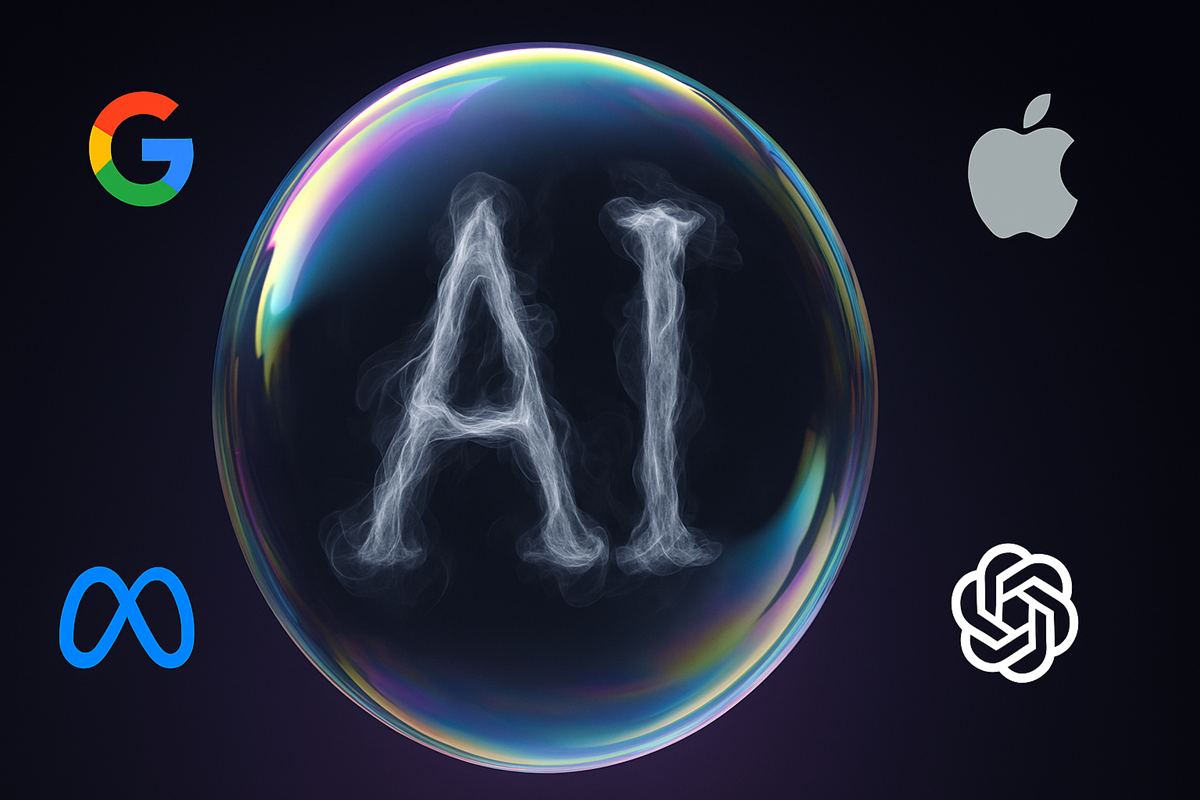November 18, 2025
The AI Bubble and What It Could Mean For the Customer Experience Market

The rush to build and deliver AI from tech giants, OS providers, customer experience vendors and the endless me-too players is a natural cause for business concern. But is it creating a tech-threatening bubble?
The huge amounts of electrical energy, high-performance hardware, plus the AI talent and teams that create the systems are all expensive commodities. Billables that need to be paid for, with the AI-only companies struggling to generate revenue.
Which leads us to the talk of an “AI bubble”, triggered by huge stock rises, possibly affecting all areas of business technology including the CX market.
This latest term comes lathered in hype and generates more headlines than the NFT (non-fungible tokens, remember them?) drama of 2021/22.
The AI Christmas Bauble that Broke
The primary issue with AI is the huge amount of money invested by major firms and sunk into the technology by others.
Making much of the AI data centre hardware, NVIDIA alone currently represents some 15% of US gross domestic product. Building the AI ChatGPT engines, the likes of OpenAI is valued at half a trillion dollars. All figures massively skewing the US and global economies.
But the near-$60 billion invested in OpenAI so far isn’t enough to keep up the development and infrastructure pace. And as many of those billions come from NVIDIA and the likes of Microsoft, they are helping create that self-inflating bubble feel.
If OpenAI is, as rumoured, approaching the US government for a bailout to keep the lights on, that’s a massive blow to hopes of an IPO. Which leads to the boss of Google warning that “no company is immune” if the AI bubble bursts.
What Would Cause the AI Bubble to Burst
While AI is helping summarise your emails, art (like the header image for this piece), or creating whole rafts of research and presentations without much effort, and creating memes at warp speed, much of that happens at the lower levels of AI use.
The key will be in exposing real value for businesses in ways not already found in ERPs (that now use their own AIs) CX solutions (again, already loaded with AI), and office productivity tools that also pack-in AI features. What else if there for an AI to offer a typical corporation?
Possible bubble-bursting triggers could include:
- Massive lawsuits from copyrighted data holders, whose text, images and video have powered much of the early AI training.
- The growing political ruck between China, Europe and the US in developing local AIs that would fragment and dilute the market.
- Investors pulling the plug (Peter Thiel sold his entire holding in NVIDIA, a move that could trigger further sell-offs).
- With the likes of Google, Apple, OpenAI, Meta and others investing so much in AI, if one drops out that could create a very nervous market.
- And then there’s the risk of broader legislation crimping AI creators’ ambitions, limiting the powers of so-called superintelligence, OpenAI’s ultimate stated goal.
As Deutsche Bank noted, “2025 was the summer AI turned ugly,” highlighting a widening gap between AI investment and ROI. And more recently cautioned “What’s happening is this most amazing wealth creation (for retail investors)… Nvidia stock is now worth $5 trillion. My question is simply, could it go to $100 trillion? Or would at some point you be the first one to say, ‘You know what, this is getting shaky?'”
Elsewhere, Goldman says the boom has already been priced-in, indicating all the wealth has already been created in valuations and stock prices, That would suggest a deflation rather than a bursting bubble, but it could still be a bumpy ride.
These notions suggest the creation of an AI monster that’s “too big to fail.” While investors may make and lose fortunes, end-user businesses, built in the cloud era, expect stable and reliable software, gentle cost changes, and none of that drama.
The Customer Experience Impact
As a huge but focused software market, customer experience does not need the power of the AGIs or superintelligence. Instead AI solutions work to improve and automate customer journeys, the quality call centre messages and personalise customer experiences.
CX vendors are happy to talk about the general power of AI, alongside their own apps and features, but the focus on operational reality is a common theme. Recent comments follow this grounded message.
- Genesys CEO Tony Bates highlighted the need for business resilience: “AI should augment human agents, not replace them. The best CX blends empathy with intelligence.”
- Zendesk CTO Adrian McDermott warned that, “AI is not a silver bullet. If you’re layering it over broken workflows, you’re just automating frustration.”
- Salesforce EVP Clara Shih noted, “We’re seeing clients invest heavily in AI without first solving data fragmentation. That’s a recipe for disappointment.”
What could change (or is changing) is a billing move from user-based pricing to resolution- or AI activity-based pricing, to help vendors recover their AI investment costs and prepare customers for the AI future.
The Future of AI and CX
As most CX platforms have already baked AI into the recent versions of their products. see this week’s latest updates for Freddy AI from Freshworks, all vendors have their features and roadmaps dripping with AI, buyers can pick and choose the solution that .
As long as there are success stories, there’s good reason to invest and investigate. But how about all the companies struggling to find value in AI? What happens when they turn their backs on the technology?
That could be the sticking point for CX vendors, whatever the underlying reasons. And if generative AI systems fail in the market, what chance business leaders will rein in the use of vertical or market specific AI solutions out of an abundance of caution.



